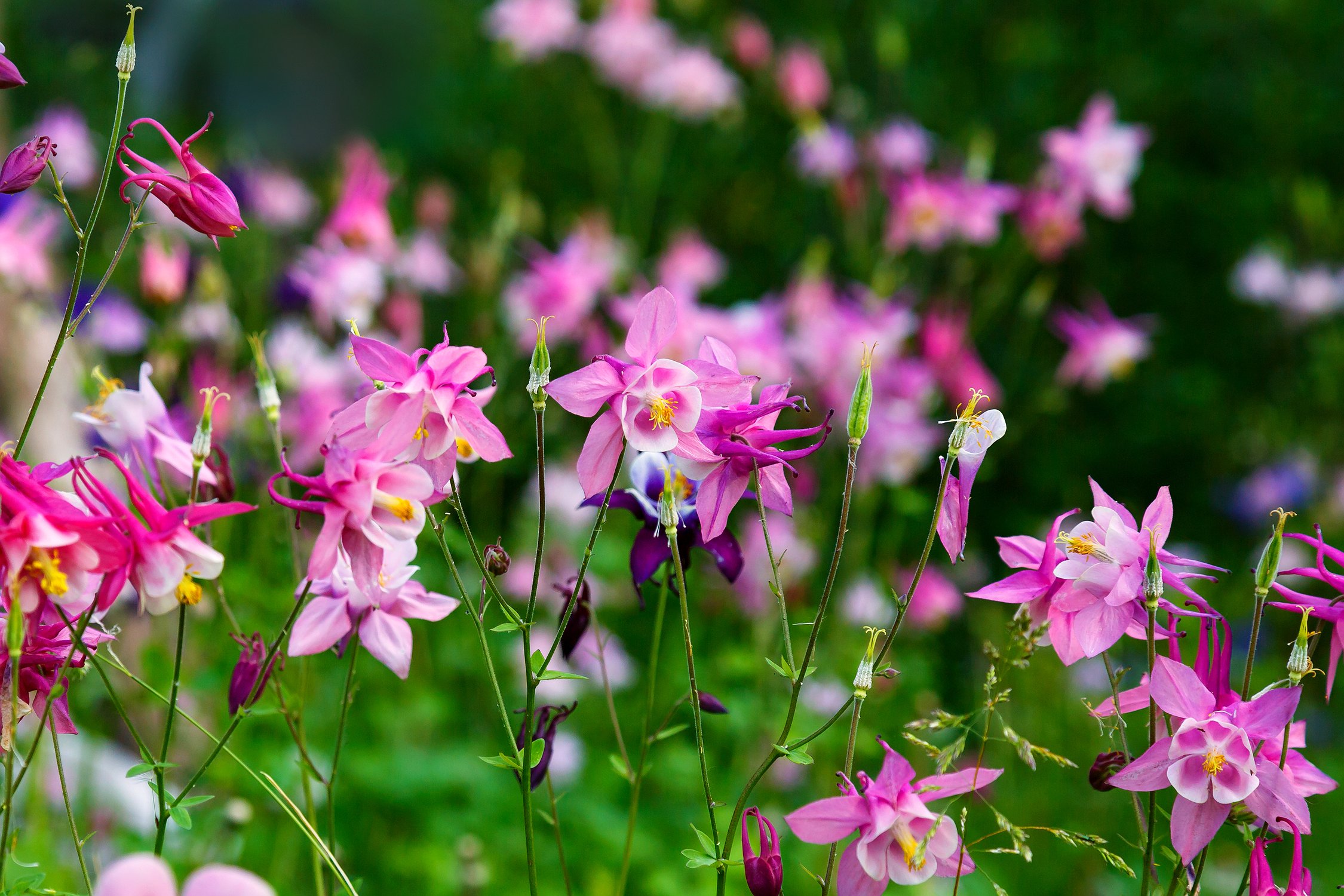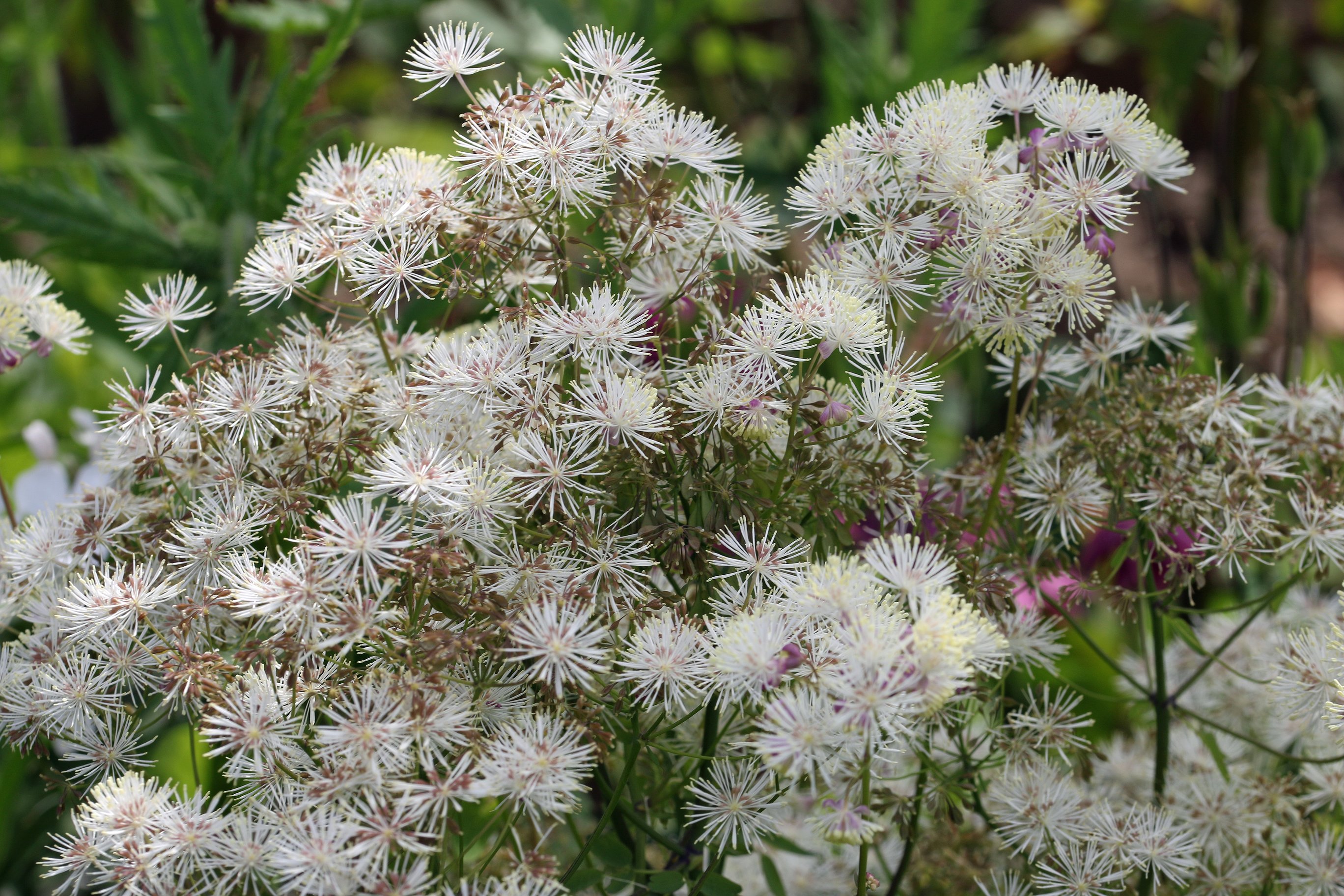Tough as nails, 'delicate' plants deliver prolific beauty
I have a huge, gnarled old cottonwood (Populus trichocarpa) in my front yard — probably the mother of the dozens of others on and around the property.
I've always liked cottonwoods. Except for their prolific suckering habit, they smell sweet, are pretty in the spring, provide leafy shade in summer, shed golden leaves for fall mulch, and provide an Oriental aspect in winter. Also, winter's the time to gather the hard-budded branch tips for making balm of Gilead.
Too, I love the fluffy, floating cotton when it blooms in late spring. (Did you know it's non-allergenic?) All in all, when kept under control, they're among my favorite trees. (Control is the keyword here, but that's another story for another time.)
But this great big one had kind of posed a problem for me. Its base is so large, with big roots sticking up and out of the ground, that, for the first few years, I pretty much ignored it — knowing there was no soil to be reached except in a few tiny pockets around that rambling hulk. I wanted to soften its look somehow, but what on earth with? Serendipity provided the answers.
About three years ago, on a trip to my son's property on the Bull River in Montana, I discovered a plethora of sweet woodruff (Galium odoratum, formerly called Asperula) growing lavishly around some big cottonwoods. I dug a few, brought them home, and tucked them into the few root holds I could find on the side of the tree facing the house. They loved it!
Now well established, they form a massive drift of whorled leaves that climb jointed stems, getting smaller as they go, so several segments of whorls will range in size from that of a 50-cent piece at the bottom to tinier than a dime on top. The tops then bloom into a froth of dainty white flower clusters that last for several days. What a lovely show (and makings for Maywine as well)!
As for the other side of the tree, facing the southwest, I had brought home several columbine plants (Aquilegia) leftover from a Master Gardener plant sale, and with no other place to put them, I chipped out spots between the roots as per the Galium. They, too, took immediate hold.
This past summer, just a year after the "desperation planting," they bloomed beautifully, giving my crusty old tree a new look completely. Both of these plants reminded me that sometimes the most fragile-looking, airy plant is the toughest of all. If you have places that need softening — or just love the look of lacy, delicate foliage and flowers — these two are great choices, but they are only the tip of the iceberg. I've compiled a list of perennials that are truly fragile-looking in flower, leaf, and stem.
Some, like valerian, are beautiful with lacy flowers and pretty cut leaves but have thick stems — so I've left them out of the running for today's assortment. Meadow rue (Thalictrum aquilegifolium) is a columbine cousin, sharing the same rounded, indented, sometimes ruffled (or even variegated) leaves but with sprays of fluffy flowers. Especially hardy here is Lavender Mist (T. Rochebrunianum) like a sea of misty florets with yellow centers. Bleeding heart (Dicentra spectablilis) is another ethereal, vulnerable-looking plant that will sleep happily under the snow and emerge after a 30-degree-below-zero winter unscathed — glorious and breathtaking. Its leaves are generally aquilegia-like, though there is a fern-leaf bleeding heart that's hardy and attractive but without the charm of an old-fashioned, long-lived bush from olden times.
Bellflowers (Campanula) are a shoo-in for fragile-looking but hardy plants. Remember the slender-stemmed harebell of our childhood? I always just called them bluebells — with their nodding, almost papery heads, they looked as frail as could be, but they laughed at North Idaho's weather. They still do, and you can get the harebells in all sizes and various colors, such as pink and white, as well as blue.
Look for C. persificolia (peach-leafed bellflower — about the size of a quarter); C. rotundifolia (Bluebells of Scotland — the small wild lookalike); or for an airy groundcover, C. carpatica, with bells nodding above low-growing foliage. There are many, many varieties of Campanula, but these three are thin-stemmed.
Naturally, the champ of light and airy would be baby's breath (Gypsophila paniculata). Opt for the old-fashioned kind with the tiny flowers that cover the delicate, branched stems like· foam. There's a pink variety, too, but make sure you're not getting a larger-flowered species unless you like them. They really are pretty, like tiny, miniature roses, but not as dainty as the original.
Ferns are natural, but difficult to pin down. The native bracken fern is not the lovely complement we're looking for here. Maidenhair, Lady, sword fern, and several other pretty specimens grow wild in this area, and the best thing to do is check with area nurseries and/ or greenhouses for what's available. Please don't go digging ferns to transplant — it's harmful to fragile ecosystems, and many are rare and/or endangered. Instead, drop by the Native Plant Society Arboretum at Lakeview Park and have a look at the fern gardens there; you'll be amazed at the variety.
An often overlooked plant — an herb really — is blue flax (Linum perennial), which fills the bill for today's list. The dainty sky-blue flowers appear all over the delicate-looking wiry stalks, living only for a day, then dropping off to be replaced by another the next day and the next — all season long. They accept partial shade. but bloom best in the sun.
I must include Astilbe, though its plumed heads can be a bit bulky for our lacy-airy theme. As with so many other species, there are many variations in plume type as well as color and a great range of blooming times, from late spring far into fall.
Most Artemisias are a bit heavy-leaved for today's column, but the feathery leaves of Southernwood (A. abrotanum) are a real consideration. Though the stems are woody, they are slender with soft, aromatic gray-green plumes of foliage that create a soft background for most brightly colored flowers. Rue (Ruta graveolens) is also a possibility with its tiny, connected tear-drop-shaped leaves and small yellow blossoms. As it ages, it becomes woody but remains delicate-looking.
Our list could contain windflowers (Anemones); Platycodon — which resembles the bellflower; goat's beard (Aruncus), a white Astilbe lookalike; and several varieties of ornamental grasses. Moonbeam Coreopsis is the most light and lacy of that family and is a lovely choice for the coveted delicate and airy look.
All the members of today's roster are as fragile-looking as can be, and everyone is a toughie that will come back year after year, regardless of the summer heat, spring rain, and winter snow. Living proof in the plant world — just as with humans — looks can be deceiving.
Editor's note: For many years, Valle Novak wrote gardening and cooking columns for the Daily Bee. "Weekend Gardener" and "Country Chef" became renowned for their humor, information, and common-sense advice on how to do everything from planting to cooking. She left behind many columns to delight her many fans. This is one such column, originally published on Jan. 28, 2001.







